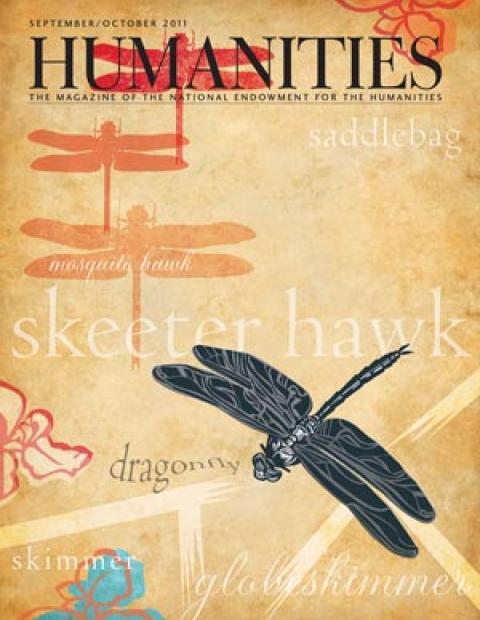“There," she says, pointing at the skyscraper beyond her office window, “I recently saw a kestrel strike a songbird midair and take it over to that windowsill to ruffle off its feathers.” Sara Ogger sits back in her chair, seventeen floors above the urban jungle of New York City, and notes with a smile, “I can now officially retire from birdwatching.”
Growing up the daughter of two scientists in Royal Oak, Michigan, Ogger developed an eye for observing the natural world and kept aquaria brimming with pet lizards and insects. But she also played the violin and had an appetite for reading. “If you can be great at science and a great writer,” her father told her early on, “you can write your own ticket. But,” he warned, “we can’t save enough for college.”
Ogger chose the humanities at Bryn Mawr, which she attended on a partial scholarship while enrolled in the college’s work-study program. She earned her BA in German studies and minored in philosophy. In between “mind-numbing feats of devotion,” she says, “like trying to read Heidegger” in its original, she studied twice in Tübingen, Germany, first in 1989 and then as a Princeton graduate student in 1995—before and after the fall of the Berlin Wall.
After college graduation, Ogger moved to New York, reckoning that the city’s concentration of culture, subway system, and walkability would remind her of Europe. She enjoyed working at Marian Goodman Gallery, where she met illuminati like German artist Anselm Kiefer, but decided to earn a PhD in German literature and language at Princeton.
After a few years of teaching at Montclair State University, Ogger found herself wanting more interaction with the general culture and society at large. She left academia and joined the New York Council for the Humanities in 2002 as a grants officer. Since 2007, Ogger has served as executive director.
Under her leadership, the council has updated its technology and communications, renovated its offices (with Ogger’s husband, Jean-Gabriel Neukomm, an architect who also redesigned Marian Goodman Gallery), and increased its grants funding and the scope of programs offered to New Yorkers everywhere—including far upstate Watertown, where Ogger once held a grants workshop. The key to success in the public humanities, she emphasizes, “is meeting people where they live and work. You have to go where they are.”
Significant state funding over a four-year period has helped the council reach more New Yorkers than ever—1.4 million last year alone, before counting those reached by media outlets. The council routinely partners with historical societies and museums to fund exhibitions, but Ogger is especially keen to look for ways to “go off the cultural infrastructure” and sponsor events in local libraries and schools, where many of the Speakers in the Humanities events take place, and even in hospitals. “Think of hospitals,” she imagines, “as a natural experiment in not having any humanities training. People in those settings tell us there is a real need.”
In the Literature & Medicine program for Veterans Administration medical centers, designed by the Maine Humanities Council, the New York Council conducts discussions with nurses, administrators, and doctors about readings pertaining to war and loss. In talking about texts, such as Donald Hall’s poems from Without, caregivers hope to better understand and tend to the 85,000 New York veterans recently home from Afghanistan and Iraq.
This year the council will commemorate, for the first time, the tragedies of September 11, which Ogger describes as still “fresh but now at a distance.” “Everyone asks,” Ogger says, “‘What were you doing when the towers fell?’” But in coming up with ways to remember the day, she wants to steer Community Conversations (small group readings based on a common text) toward thinking about what people can do for their community—service, for instance—after a tragedy.
New York City is arguably the center of culture in America: There’s Museum Mile, the New York City Ballet, and the Metropolitan Opera, just to name a few. Ogger reminds that beyond that impressive slip of an island, though, there are “world-class treasures, like the Hyde Collection” in Glens Falls, or the studio of the late folk artist Homer Benedict in Treadwell. It is filled with “row upon row of wood carvings of tiny oxen and horses and bales of hay,” says Ogger, that remind her of “Chinese funerary figures.” A mini-grant went toward photographing them for a catalog and exhibition, and a crisp poster of one of the images hangs behind Ogger’s desk.
“Brown may be the color of history in Trivial Pursuit. But history,” she says, pointing to that photograph in black and white, “is really not faded and brown. It has a way of coming back.”


